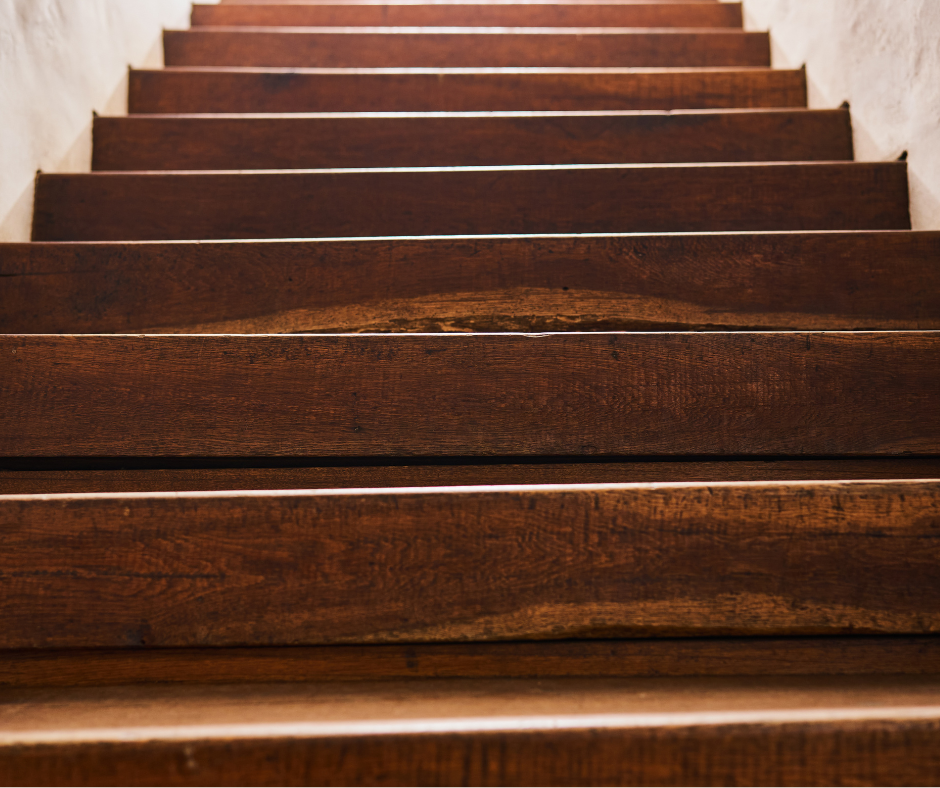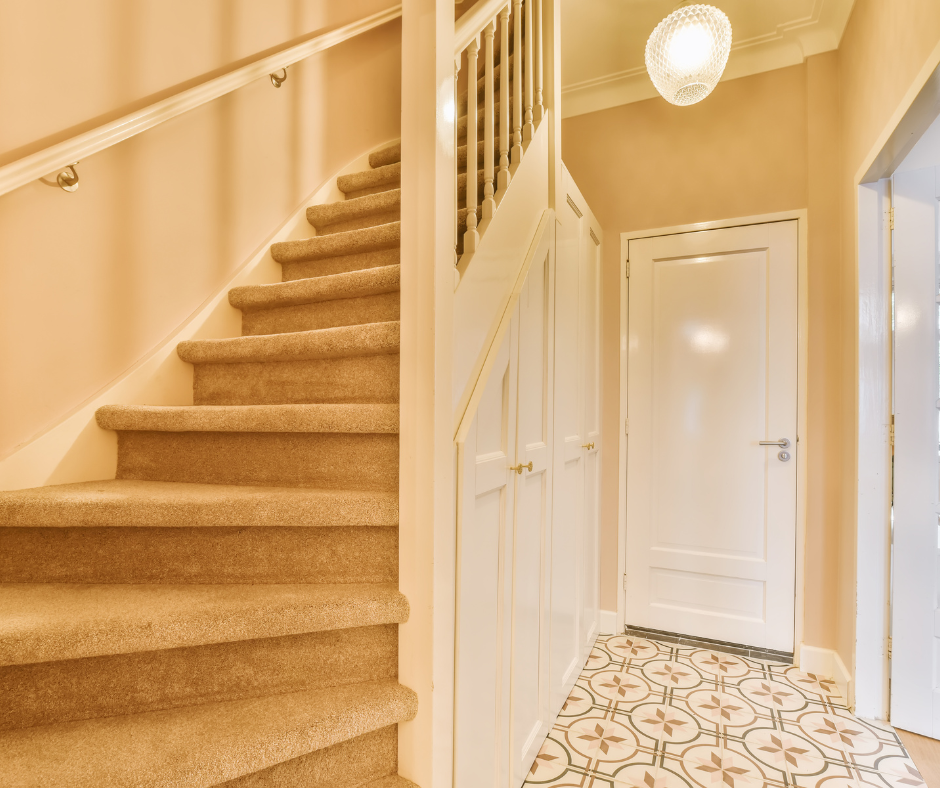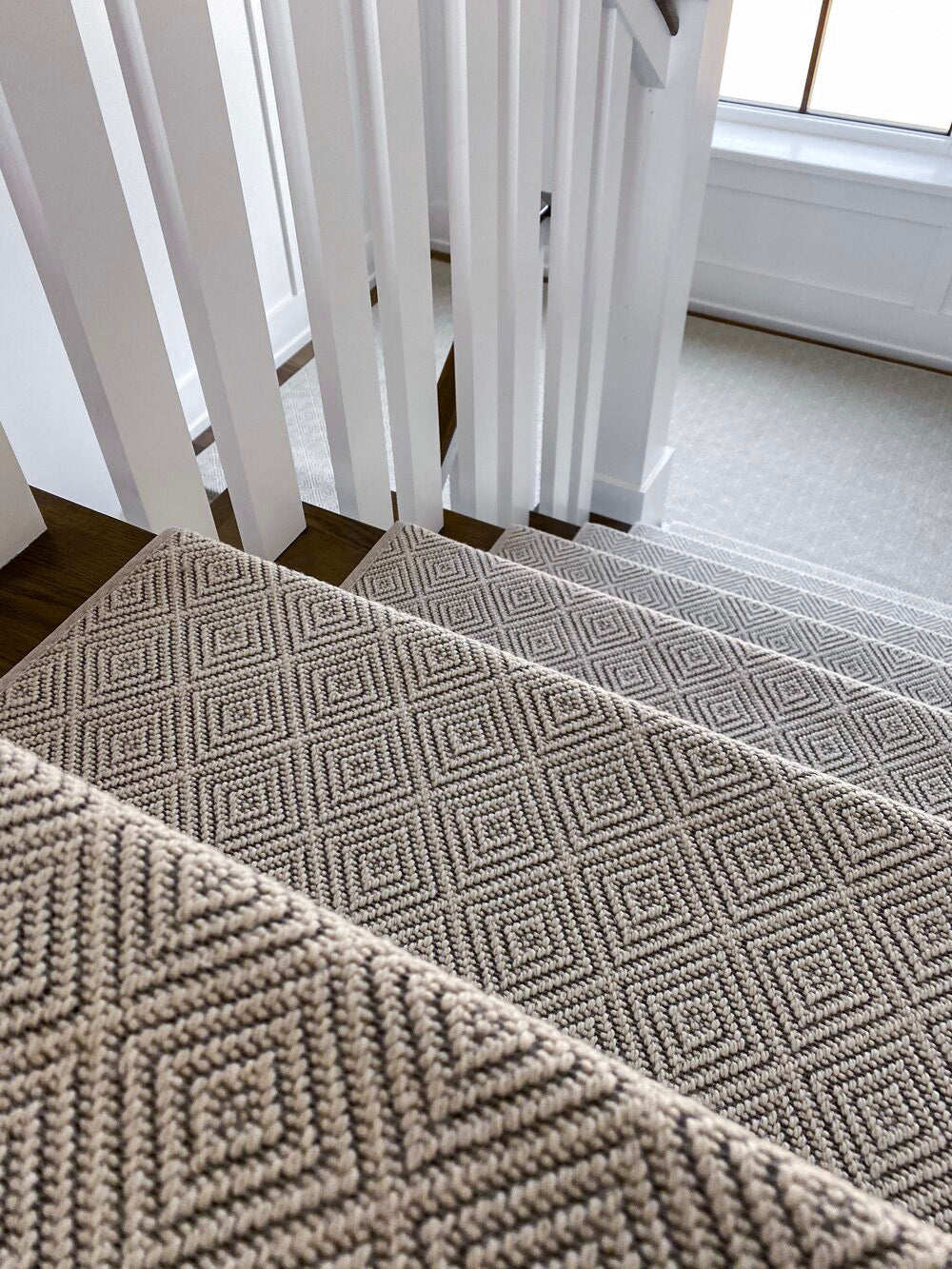Proper stair riser dimensions ensure a staircase is safe and comfortable to use.
The standard riser height ranges from 7 to 7.5 inches, allowing for smooth movement.
Installing carpet stair treads adds extra grip, reducing the risk of slips and enhancing stair durability.
Accurate stair riser dimensions help prevent tripping by keeping each step uniform.
Building codes require risers to be no taller than 7.75 inches and no shorter than 4 inches.
Adding carpet stair treads improves both safety and style, making stairs more functional and visually appealing.
What Is the Standard Size of a Stair Riser?
The standard stair riser height typically falls between 7 and 7.5 inches.
This measurement is considered ideal because it allows for a comfortable and natural stride when ascending or descending a staircase.
When designing stairs, consistency is key. If riser heights are inconsistent, even by a fraction of an inch, it can cause a person to misstep and trip.
This is why stair builders prioritize uniform stair dimensions, ensuring each riser height remains the same throughout the staircase.
Why Riser Height Matters
A riser that is too tall can make climbing stairs feel strenuous, while a riser that is too short can disrupt a person’s walking rhythm.
Both scenarios increase the risk of accidents.
-
Taller Risers (Above 7.75 inches): Can make stairs difficult to climb, particularly for children and older adults.
-
Shorter Risers (Below 4 inches): Can feel unnatural and may require additional steps, making the staircase unnecessarily long.
To maintain a safe and comfortable design, always follow the recommended stair riser dimensions.
What Is the Building Code for Stair Riser Height?
The International Building Code (IBC) and the International Residential Code (IRC) set clear regulations for stair riser height.
These codes ensure that stairs are built safely, preventing design flaws that could lead to injuries.
-
Maximum Riser Height: 7.75 inches
-
Minimum Riser Height: 4 inches
According to these standards, all risers in a staircase must be uniform to avoid trip hazards.
Inconsistencies in riser height can create an unpredictable walking pattern, which is especially dangerous in high-traffic areas.
For homeowners who are remodeling stairs, it is crucial to check local building codes, as some regions may have slightly different requirements.
Stair Tread Overhang: How Much Should It Extend?
The stair tread overhang, also known as the nosing, plays an important role in stair safety and comfort.
The nosing provides additional foot space and makes it easier to see each step, reducing the risk of missteps.
Standard Stair Tread Overhang Measurements
-
Typical Overhang: Around 1 inch
-
Minimum Overhang: ¾ inch
-
Maximum Overhang: 1 ¼ inches
Adding a stair tread overhang improves stability by allowing the ball of the foot to land securely on the step.
If the nosing is too small or nonexistent, it can make descending stairs more difficult, increasing the risk of falls.
Is an 8-Inch Step Too High?
An 8-inch riser height is generally too tall for most staircases.
As a rule, risers should remain within the 7 to 7.5-inch range to ensure safe and comfortable use.
Why an 8-Inch Step Is Problematic
-
Difficult to Climb: Taller risers require more effort, making the staircase challenging for seniors, children, and individuals with mobility issues.
-
Increased Risk of Falls: Higher steps force people to lift their feet higher, making it easier to trip.
-
Code Violations: Many building codes do not allow risers above 7.75 inches for safety reasons.
For safe and functional stair design, it’s always best to keep riser height within recommended limits.
Comprehensive Stair Dimensions for Comfort and Safety
Besides riser height, other stair dimensions impact stair safety and usability.
Standard Measurements for Residential Stairs
-
Riser Height: 7 to 7.5 inches
-
Tread Depth: 10 to 11 inches
-
Stair Width: At least 36 inches for residential stairs
-
Stringer Spacing: Around 16 inches apart for support
Following these measurements ensures that stairs are easy to use while meeting safety standards.
Proper stair dimensions also create a staircase that feels natural to walk on, reducing fatigue and discomfort.
Standard Stair Stringer Dimensions and Their Role in Stair Construction
Stair stringers are the sloped boards that provide structural support to the staircase.
They determine the shape of the stairs by holding the treads and risers in place.
Key Stringer Measurements
-
Rise per step: 7 to 7.5 inches
-
Run per step: 10 to 11 inches
-
Spacing between stringers: 16 inches apart for stability
Well-constructed stair stringers ensure that each step is evenly spaced and securely supported.
The stringers must be strong enough to handle weight and movement, preventing stair creaks and structural weaknesses.
How to Measure and Cut Stair Stringers
Building stair stringers requires careful calculations to ensure accuracy.
Here are the key steps:
Step 1: Calculate the Total Rise and Run
-
Measure the total height from the lower floor to the upper floor (total rise).
-
Divide the total rise by the preferred riser height (7 to 7.5 inches) to determine the number of steps.
-
Multiply the number of steps by the tread depth (10 to 11 inches) to get the total run.
Step 2: Mark the Stringer Board
-
Use a framing square to mark the rise and run on the board.
-
Ensure each step is measured correctly to maintain uniformity.
Step 3: Cut and Install the Stringers
-
Cut along the marked lines using a circular saw for precision.
-
Secure the stringers to the staircase frame and attach them firmly to the ground or landing.
Properly cut and installed stringers are the backbone of a strong staircase.
Enhancing Stair Safety with Non-Slip Solutions
While proper stair dimensions improve safety, additional measures can further reduce fall risks.
Adding Non-Slip Stair Treads
Installing non-slip stair treads is one of the best ways to enhance staircase safety.
These treads provide extra grip, making stairs safer, especially in homes with children, pets, or elderly residents.
Using Carpet Stair Treads for Comfort and Style
Carpet stair treads not only enhance grip but also add warmth and style to a staircase.
Unlike full carpeting, stair treads offer the benefits of a soft surface without completely covering the stairs.
How Stair Riser Dimensions Affect Staircase Ergonomics
The right stair riser dimensions play a key role in staircase ergonomics.
Well-designed stairs reduce strain on the legs and joints, making movement more natural and comfortable.
The Impact of Riser Height on Walking Motion
The height of each riser directly affects how easy or difficult it is to climb a staircase.
A riser that is too high requires more effort, leading to faster fatigue.
On the other hand, a riser that is too low may disrupt a person’s stride, making the staircase feel awkward to use.
The optimal range of 7 to 7.5 inches creates a smooth walking rhythm, improving overall comfort.
Stair Riser Consistency for Accessibility
Uniform riser height is especially important for accessibility.
People with mobility issues, children, and elderly individuals rely on consistent step heights to maintain balance and stability.
Even a slight variation between risers can cause tripping hazards.
By keeping stair risers uniform, staircases become safer and easier for everyone to navigate.
Common Stair Design Mistakes and How to Avoid Them
Even small errors in stair riser dimensions can lead to safety hazards. Avoiding these common mistakes ensures a staircase that is both functional and compliant with building codes.
Inconsistent Riser Heights
One of the biggest mistakes in stair construction is having risers with varying heights.
When risers differ even slightly, it creates an uneven walking pattern, increasing the risk of tripping.
To prevent this, always measure carefully and double-check calculations before cutting stair components.
Ignoring Tread and Riser Ratios
The relationship between tread depth and riser height is crucial for stair safety.
If the treads are too shallow compared to the risers, the stairs may feel steep and difficult to walk on.
A good balance, such as a 7.5-inch riser with an 11-inch tread, provides a comfortable and secure step.
Stepping It Up
Choosing the correct stair riser dimensions ensures that your staircase is both safe and comfortable to use.
Consistent riser height and tread depth create a predictable walking pattern, reducing the risk of trips and falls.
Adding carpet stair treads further enhances safety while improving the overall look of your stairs.
A well-designed staircase follows proper stair dimensions and meets building code standards.
Taking the time to measure accurately and use high-quality materials will result in long-lasting, functional stairs.
Whether for a new build or a renovation, paying attention to these details will make a significant difference in safety and style.
Contact Oak Valley Designs for Premium Stair Solutions:
-
Website: https://oakvalleydesigns.com/
-
Phone: 706.331.0315
-
Email: info@oakvalleydesigns.com
-
Address: 30 River Ct SW Bldg E Cartersville, Ga 30120



